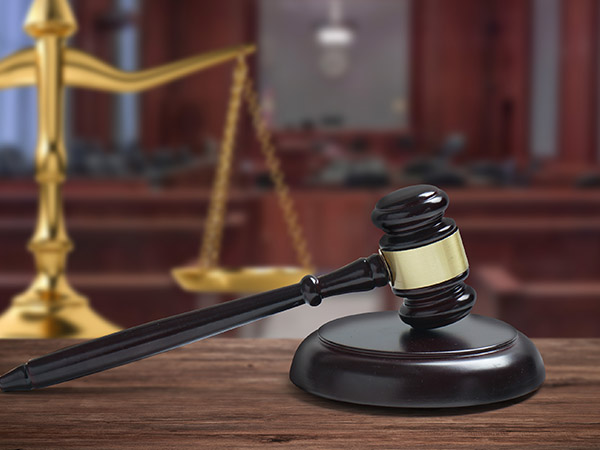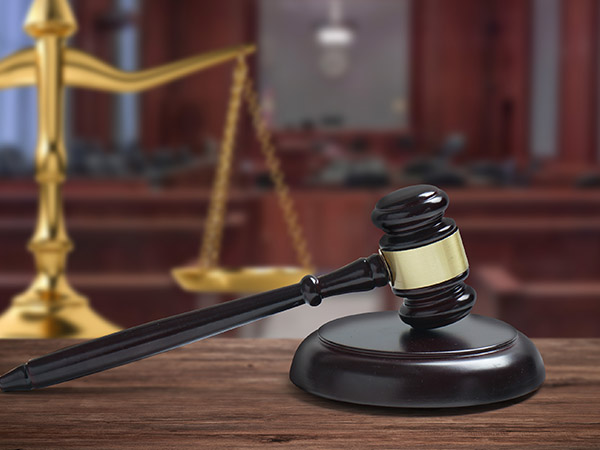Determination of similarity between games' trademarks
Online game trademarks are featured by the relatively short period after the formation of trademark and the very closeness of mobile game trademark to the game, resulting in the existence of a number of identical words used by a class of games. There have been inevitable conflicts between tradition and innovation because a large number of games have drawn on traditional cultural elements.
According to Article 9 of the Interpretation, "trademarks being similar shall mean, through comparison between the alleged infringing trademark and the plaintiff's registered trademark, the two marks being similar to each other in the composition, pronunciation, or meaning of the words contained in each or in the composition and colors of the devices contained in each, in their overall structure after combination of the elements, or in their three-dimensional shape or combination of colors, each of which is liable to cause the relevant public to misidentify the source of the goods concerned or mistakenly believe that the source has a particular connection with the goods bearing the plaintiff's registered trademark." The principle for determination of identity or similarity between trademarks should: (a) use relevant public's general attention as the standard to make both an overall comparison of trademarks and a comparison of trademarks' major parts, which should be respectively made where the compared objects are segregated, and includes the similarity between both overall trademarks and trademarks' major parts; (b) consider the distinctiveness and popularity of the registered trademarks applied for protection. A similarity comparison of names for different app games requires an examination of the methods for comparison of the traditionally overall elements as trademarks' structure and their major parts after segregation in addition to the registered trademark's distinctiveness and popularity, a consideration of the real users' actual use and their intention for use based on App applications' feature of eyeball economy, and a review of the operator's interest with relatively high reputation from its use of such trademark. At the same time, measures should be taken to prevent trademarks from being cybersquatted, laid aside or wasted, or to prohibit the practice of making profits or destroying the established stable market structure by way of lawsuits.
An infringement can also be constituted by the use of the specific words of other's trademark in one's game name. In the case of infringement upon trademark of the game Dixiacheng Yongshi yu Monv, [10] Tencent Company is entitled to the right to such game in China's mainland by authorization, and Shanghai Yongchen Company is the copyright owner of such game operated by the defendant Gametowin Company. Tencent Company alleged that the two defendants constituted joint infringement and claimed an indemnity of more than 3 million yuan. The defendant argued that the words of "Dixiacheng" and "Yongshi" are not proper names with special meaning in Chinese language, due to which they should not be prohibited from being used, whereas the defendant gave name for its game according to the contents of such game and has specific meaning. The court ruled that the words of "Dixiacheng" and "Yongshi" included in the name of the game Dixiacheng Yongshi yu Monv was similar to the plaintiff's registered trademark Dixiacheng Yongshi yu Monv, which may mislead the game users and cause confusion and misbelief among them; that the defendant had not only used the two phrases of "Dixiacheng" and "Yongshi" in its game name with few words even if such two phrases may not cause confusion or misrecognition by merely separate use of them; that the goods of both mobile game and Internet game are classified into the electric games which should be recognized as the use of sign on identical or similar goods; that the defendant ought to have known the former's popularity which proved the subjective existence of its playing up to the former's goodwill and objective difficulty in likely causing confusion or misrecognition; and that, therefore, it constituted infringement. According to this judgment, the court held that the independent or separate use of "Dixiacheng" and "Yongshi" does not affect the determination of identical or similar trademarks. From the point of view of the defendant's use method, although its game name was very short, it major part contained two phrases with distinctiveness by use of sign similar to the registered trademark, proving the existence of subjective malice and the likely confusion among the consumers.
For most trademarks, the profile is the most significant aspect to distinguish it from other trademarks, due to which it will not cause confusion among the consumers even if they have the same colors arranged. [11] If the an app's name itself is the generic name of the goods or has a descriptive meaning for systematic description of the service function, purposes, etc., it is necessary to determine whether it constitutes a non-trademark use. The specific conditions such determination includes: (a) description: describing the service features, purposes, etc.; (b). goodwill: there is no subjective maliciousness for playing up to other's popularity and (c) just: there is no prominent use or no use of the font identical with that of the trademark.
Conflicts between game trademarks and other rights
There is also a relatively special type of infringement that has special meanings for the use of trademarks. The main reason is that the game media has been changed, leading to the conflicts of rights. The development of HTML-5 technology has spawned the method of webpage game, resulting in conflicts between the domain of webpage and trademark. There has been more and more such kind of conflict in judicial practice. The court ruled in the case of Guanyou Company v. Yang Peng, Xiamen Sanwu and CNNIC Domain concerning Infringement upon trademark rights [12] that Yang Peng had, after his launch of www.17173.cn, used the figure of "17173" in a prominent place on the website and in the same design style, and the words displayed in a prominent position on the front page "Look for PC online games, click www.17173.com. Then, where are mobile online games? On 17173.cn. Do you remember?" in a prominent place of the front page of the website. The foresaid use of "17173" was a use under trademark law because it distinguishes the source of services among the public.
The issue of rights conflicts mainly refers to the disputes over rights conflicts in intellectual property dispute cases. It refers to a dispute in which one party lodges a claim on the basis of its right to intellectual property and the other party makes defense on exercising of its own intellectual property rights. China's Supreme People's Court has issued two interpretations, namely, Provisions on Certain Issues Concerning the Trial of Civil Dispute Cases Involving Conflict of a Registered Trademark or Enterprise Name with Any Pre-existing Right and Interpretations on Certain Issues Concerning the Application of Law on Hearing Civil Disputes over Conflicts involving Intellectual Property Rights, providing that, from the perspective of substance and procedure, the court shall, when hearing such kind of cases, correctly determine the parties' legal rights and interests according to the principle of protecting the pre-existing rights and upholding fair competition and honesty. This provision stipulates effective restriction on the subjective malice and act method of the postexisting right owner from the perspective of methodology and value orientation in order to prevent other's use of methods in a legal manner from engaging in illegal activities, from taking possession of other's existing goodwill or maliciously causing chaos on the market, which can effectively prevent malicious infringement.
Another case contrary to this case is Australia's Gewinn case. [13] The defendant engaged in lotteryattached online game business at the website of www.gewinn.at. The plaintiff published a financial news magazine called Gewinn, registered Gewinn as trademark, and had the domain name of www.gewinn.co.at. After the plaintiff discovered that the defendant had registered and used Gewinn as domain name, it required the defendant to pay $6,500 per month to itself. The court ruled that the use of a trademark would constitute confusion only if it could cause confusion to specific companies or individuals; that the defendant and the plaintiff in this case had different business areas; that both parties were not very well-known due to which one party could not assume that Internet users might mistake them; and that the defendant's use constituted a reasonable use of the plaintiff's trademark because the plaintiff registered the domain name at an earlier time.
Conclusion
Technology and market have spawned some infringement disputes. The inheritance of game works, regardless of its being from end game to mobile game, is lack of continuity. The common game developers are more cautious about the development of mobile games because of its featured by long periodical development and high requirement. It is this time lag that is used by infringers to rapidly develop a work with simple theme in a short period by use of the name of the high-end game with pre-existing popularity, or by use of the words having association among the users as the name of infringing game. In this way, infringer can effectively save the cost for popularization and promotion, and the users are likely to be confused or mistaken by associating the infringing game with the pre-existing work developer. When the users become familiar with rules, characters and routines in the process of playing the game, and even if the game trademark holder develops a genuine game, the market has already been preempted, and the users have had stickiness which makes it unlikely for them to contact works of the same type or having familiar rules to follow, from which the trademark holder will suffer huge loss.
Restriction on the abuse of litigation rights. In many cases involving infringement upon game trademark, infringers have tried their best to use legal procedures to delay the proceedings as much as possible in litigation, such as raising objections to jurisdiction, applying for deferred hearings, prolonging discovery, and applying for evaluation. The proprietor's original intention to timely and effectively maintain its right is often frustrated because game's short life cycle might be ended at the end of the litigation. At the same time, because the income of mobile games is not transparent and there are huge differences between different games in terms of operation income and costs, it is very difficult for obligee to submit evidences at times, who has to mainly rely on indirect evidence as supporting evidences to prove the profit or loss. Therefore, it is difficult for the court to determine the amount of compensation, due to which the infringer has the idea of leaving things to chance.
Review of injunction in litigation. On the one hand, the trademark in use and registration approved lacks of distinctiveness and is even diluted to a generic name because of the uncertain use and approval of trademark. In addition, after the infringement, the obligee often hopes that the right can be quickly maintained by the court's issuance of injunction to order the accused game to be stoped after the occurrence of infringement. However, its application for such injunction has no evidence to support and may not be affirmed by the court because it lacks key evidences for right attribute, infringing act, infringing act emergence and injunction necessity, or it is even applying for notarization at the time of litigation. On the other hand, the courts are very cautious about issuing injunction and will take into account the necessity for injunction issuance in terms of game production, trademark and game identity, infringement ratios, public costs resulting form injunction and social effects. Therefore, it is very rare to successfully apply for injunction in judicial practice.
In recent years, numerous cases involving infringement upon mobile game trademark have emerged, a small amount of such cases have been tried by the court, and many of such cases have not been brought to the court, or settled during judicial procedure. Although game trademark infringement is very complicated, it has certain rules to follow. All the courts hearing the above-mentioned cases take into account the following factors: the method for the infringer to use the registrant's trademark; the determination of goods or services with identical or similar trademarks; the determination of identical or similar trademarks, etc. The answers to these questions can be confirmed in different judgments, thus establishing an initial logical relationship for whether there is an act infringing upon trademark.
(Translated by Yuan Renhui)
Note:
1 Yao Bingbing, "How to Determine Product's Classifi cation in the Determination of Trademark Infringement: a Comment on the Case of Nanjing Helmanns Group Co., Ltd. v. Wu Zhuqin (Nanjing Chongmei Clothing Store) concerning Infringement upon Trademark Right, China Intellectual Property News, 9 February 2017.
2 (2015) Hai Min (Zhi) Chu Zi Di 15256 Hao Minshi Panjueshu.
3 (2015) Hai Min (Zhi) Chu Zi Di 27551 Hao Minshi Panjueshu.
4 (2013) Hai Min Chu Zi Di 27744 Hao Minshi Panjueshu.
5 Zhu Jianjun: "The Determination of Trademark Infringement should be Based on the Constitution of "Trademarked Use": Inspiration from the Case of Apple's Trademark.Intellectual Property, vol. 1, 2014.
6 (2007) Pu Min San (Zhi) Chu Zi Di 125 Hao Minshi Panjueshu.
7 Song Jianbao, Comment on the Approximate Standard of Trademarks in the Honghe Red Case [J]. China Trademarks, vol. 11, 2010
8 Canon Kabushiki Kaisha v. Metro-Goldwyn-Mayer Inc. (Formerly Pathe Communications Corporation), Case C-39/97, para.22.
9 According to different contents, games can also be classifi ed into types such as ACT action games, AVG adventure games, FPS fi rst-person viewpoint shooting games, FTG fighting games, MUG music games, PUZ puzzle games, RAC racing games, RPG role-playing games, RTS real-time strategy games, SLG simulation/war chess strategy games, SPG sports games, STG shooting games and other types.
10 (2014) Shi Min Chu Zi Di 66 Hao.
11 Li Yuxiang: "Legal Considerations for Establishing China's Trademark Coexistence System", Intellectual Property Rights, vol. 3, 2012.
12 (2013) Hai Min Chu Zi Di 16028 Hao Minshi Panjueshu.
13 See "Four Factors of Online Trademark Infringement", People's Court Daily, 4 May 2006.










